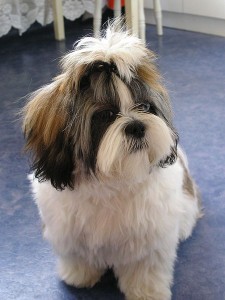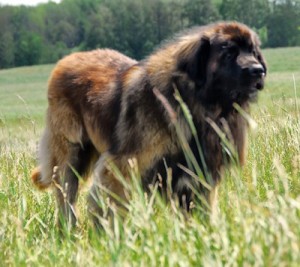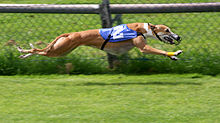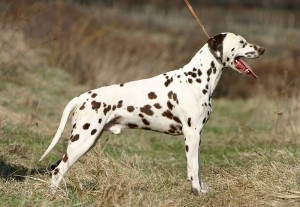01529 304273 - [email protected]
A belated Happy New Year to everyone! One of the highlights of my holiday season was walking my dogs with a friend’s puppy. One of my dogs, Super-Dog as we could call him – is very sociable and likes to make friends with everyone and anyone. The other dog, who we will call Scaredy-Dog – is suspicious of all other dogs and it was lovely to see her make friends and find a rare play mate. Walks can be a stressful time for us when we have to pass by unfamiliar dogs. Super-Dog likes to stride ahead and say hello, Scaredy-Dog is normally hiding behind my legs and hoping to make an escape. If I go and get Super-Dog she is torn between staying with me and keeping out of the way. Now Super-Dog is in his senior years his hearing has become quite selective, and it can be a challenge to get him to listen! The end result is often a tangle of legs and leads with me trying to offer apologies all round.
There are times when it is obvious our pets need veterinary attention, when illness or injury requires they get medical treatment quickly. Alongside this it is worth keeping an eye on any subtle changes that are not immediately obvious – but that may cause problems over time. Vets will conduct a full clinical examination when they see your pet, looking for early signs of potential problems, but if your pet seems healthy their visits to the surgery may be quite infrequent. There is plenty you can do at home to keep an eye on things and this article discusses some general checks we can all try to incorporate as part of our normal routine.
As you may be aware there have been recent changes to the law which will affect all dog owners. From April 2016, it will be law for all dogs to be micro-chipped, and owners who do not comply – and can be traced – may be liable to a penalty via a substantial fine. The legislation aims to encourage responsible ownership, establish a safeguard by which ownership can be established and to reduce the problem of the stray dog population. It acts as a more permanent form of identification than a collar or tag which can be easily lost or removed.
Animals have been submitted as applicants to suspected fraudulent educational establishments to prove the lack of checks these institutions go through before issuing diplomas and degrees, with obviously no studying, or examinations taking place. Fortunately it seems that for us in the UK, we only have to worry about feline hypnotherapists rather than dogs with masters degrees in business studies. However if you’ve ever looked into a cat’s eyes, you can understand where their coming from!
Many dogs instinctively know when their owner usually comes home from work every day, or what time they can expect their regular meals. But does this mean that dogs perceive time the same way humans do?
There isn’t a great deal of research specifically about how dogs perceive time, however it’s possible to make several assumptions based on memory research in other species, such as rodents, birds and primates. William Roberts, a researcher in the field of animal intelligence made some remarkable conclusions regarding animal memories and anticipation. He concluded that animals are “stuck in time” meaning that, without the sophisticated abilities it takes to perceive time, like true memories, animals only live in the present. Roberts thinks animals are “stuck in time” because they can’t mentally “time travel” backward and forward. Ceaser Milan has a similar philosophy when he states that dogs ‘live in the moment’.
 The name Shih Tzu comes from the Chinese word for “lion dog” because this kind of dog was bred to resemble “the lion as depicted in traditional oriental art,such as the Chinese guardian lions. (The Pekingese is also called “lion dog” in Chinese.) The Shih Tzu is also known as the “Xi Shi dog” because Xi Shi was regarded as one of the most beautiful women of ancient China.Shih Tzu were nicknamed the Chrysanthemum Dog in England in the 1930s.The breed can also be referred to as the Tibetan Lion Dog, but whether or not the breed should be referred to as a “Tibetan” or “Chinese” breed is a source of argument, the absolute answer to which is probably impossible to prove.
The name Shih Tzu comes from the Chinese word for “lion dog” because this kind of dog was bred to resemble “the lion as depicted in traditional oriental art,such as the Chinese guardian lions. (The Pekingese is also called “lion dog” in Chinese.) The Shih Tzu is also known as the “Xi Shi dog” because Xi Shi was regarded as one of the most beautiful women of ancient China.Shih Tzu were nicknamed the Chrysanthemum Dog in England in the 1930s.The breed can also be referred to as the Tibetan Lion Dog, but whether or not the breed should be referred to as a “Tibetan” or “Chinese” breed is a source of argument, the absolute answer to which is probably impossible to prove.
The Shih Tzu is an alert, lively, little dog. It is happy and hardy, and packed with character. The gentle, loyal Shih Tzu makes friends easily and responds well to consistent, patient training. It makes a very alert watchdog. It is courageous and clever. Playful and spunky, this affectionate little dog likes to be with people and is generally good with other pets. Some can be difficult to house train. The Shih Tzu needs all of the humans in the house to be pack leaders, with the rules of the house made consistently clear. Owners who allow their dogs to take over may find them to be snappish if they are surprised or peeved. Because of this dog’s small size and its adorable face, it commonly develops Small Dog Syndrome ( see separate article on this site), human induced behaviours where the dog believes he is the boss of humans. This causes a varying degree of behavioural issues, such as, but not limited to separation anxiety, guarding, growling, snapping, and even biting. These dogs may become untrustworthy with children and sometimes adults, as they try and tell the humans what THEY want THEM to do. They will be obstinate as they take their stand and defend their top position in the pack. They may bark obsessively as they try and TELL you what they want. These behaviours are NOT Shih Tzu traits, but rather behaviours brought on by the way they are treated by people around them.
 The Leonberger is a giant dog breed, and is unusual for large breed dogs in that it was developed specifically for its appearance, rather than a specific function. The breed’s name derives from the city of Leonberg in Baden-Württemberg, Germany, and was apparently bred to resemble lion in the town crest.
The Leonberger is a giant dog breed, and is unusual for large breed dogs in that it was developed specifically for its appearance, rather than a specific function. The breed’s name derives from the city of Leonberg in Baden-Württemberg, Germany, and was apparently bred to resemble lion in the town crest.
The Leonberger has a lively nature. It is brave, intelligent, steady, affectionate and calm , the Leonberger loves everyone. It is intelligent, and its loyalty and love for its family is unparalleled. A well-balanced Leonberger will be highly trustworthy and have incredible patience, even with the most obnoxious children. With most of these dogs, if the situation becomes too intense, instead of showing any aggression, the Leonberger simply walks away. They are not known to be great watchdogs. The Leonberger does not respond very well to harsh training methods; training requires patience. Owners need to be firm, but calm, confident and consistent. Often called a gentle giant, the Leonberger is serious, eager and willing to please, responding well to training. The Leonberger gets along with other dogs, but it is highly recommended that they are well socialised and trained early as this puppy will become a very large adult. Especially essential is teach your dog to respect humans by training it not to jump, to heel on the lead and to enter and exit all door and gateways after the humans.
The Leonberger sheds fur very heavily. A good brushing every week is sufficient to keep it in fine shape, except when the undercoat is being shed; then daily combing or brushing is in order for the duration of the moult.
 The Greyhound is a very old European breed, a sighthound which has been historically bred for coursing game and racing. Since the rise in large scale rescue of retired racing Greyhounds, it has seen a resurgence in popularity as a family pet.
The Greyhound is a very old European breed, a sighthound which has been historically bred for coursing game and racing. Since the rise in large scale rescue of retired racing Greyhounds, it has seen a resurgence in popularity as a family pet.
Greyhounds are an intelligent and gentle and intelligent breed whose combination of long, powerful legs, deep chest, flexible spine, and slim build allows it to reach average race speeds in excess of 63 kilometres per hour (39 mph)).At maximum acceleration, from a standing start, a greyhound can reach full speed within 30 metres or six strides. The only other animal that can accelerate faster over a short distance is the cheetah, which can reach speeds of 109 kilometres per hour (68 mph) over 3-4 strides from a similar standing start.
 The Dalmatian (Croatian: Dalmatinac, Dalmatiner) is a breed whose roots are often said to trace back to Dalmatia (a region of Croatia).It is also known as the Carriage Dog, the Spotted Coach Dog, the Firehouse Dog and even the ‘Plum Pudding Dog’.
The Dalmatian (Croatian: Dalmatinac, Dalmatiner) is a breed whose roots are often said to trace back to Dalmatia (a region of Croatia).It is also known as the Carriage Dog, the Spotted Coach Dog, the Firehouse Dog and even the ‘Plum Pudding Dog’.
The Dalmatian is noted for its unique black- or brown-spotted coat and was mainly used as a carriage dog in its early days. Today, this dog remains a well-loved family pet, and many dog enthusiasts enter their pets into the competitions of many kennel clubs.
 Firstly NEVER leave your baby alone with any dog. The vast majority of dogs get on well with children and babies, and child and pet get a great deal out of the experience. However always remember that a dog thinks like a dog, not a person. A dog will not consider a baby as a person, it is a nosy, smelly thing that is taking the attention of its pack members. Therefore your aim is to prepare your dog thoroughly for the new arrival to ensure all goes well.
Firstly NEVER leave your baby alone with any dog. The vast majority of dogs get on well with children and babies, and child and pet get a great deal out of the experience. However always remember that a dog thinks like a dog, not a person. A dog will not consider a baby as a person, it is a nosy, smelly thing that is taking the attention of its pack members. Therefore your aim is to prepare your dog thoroughly for the new arrival to ensure all goes well.
The sooner you start the process of preparing your dog for the arrival of a new baby, the better. The more time you spend on training him, helping him to adjust to the changes that are coming, the easier the whole process will be! The arrival should be as stress free and pleasurable for you both as possible.